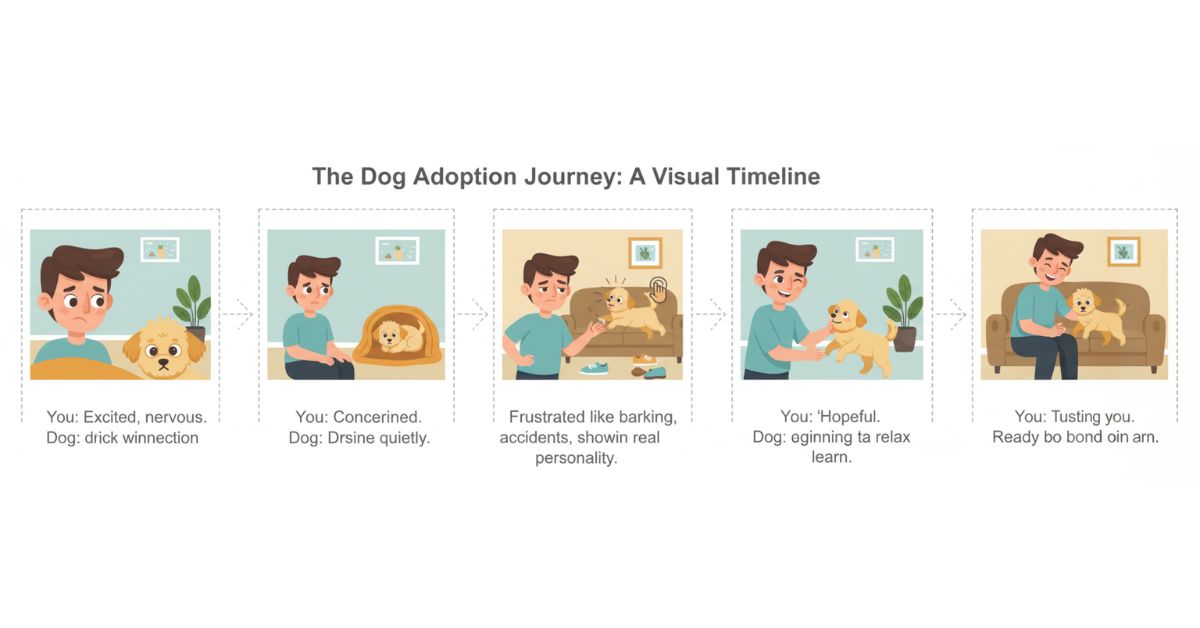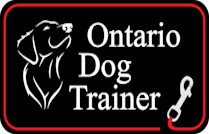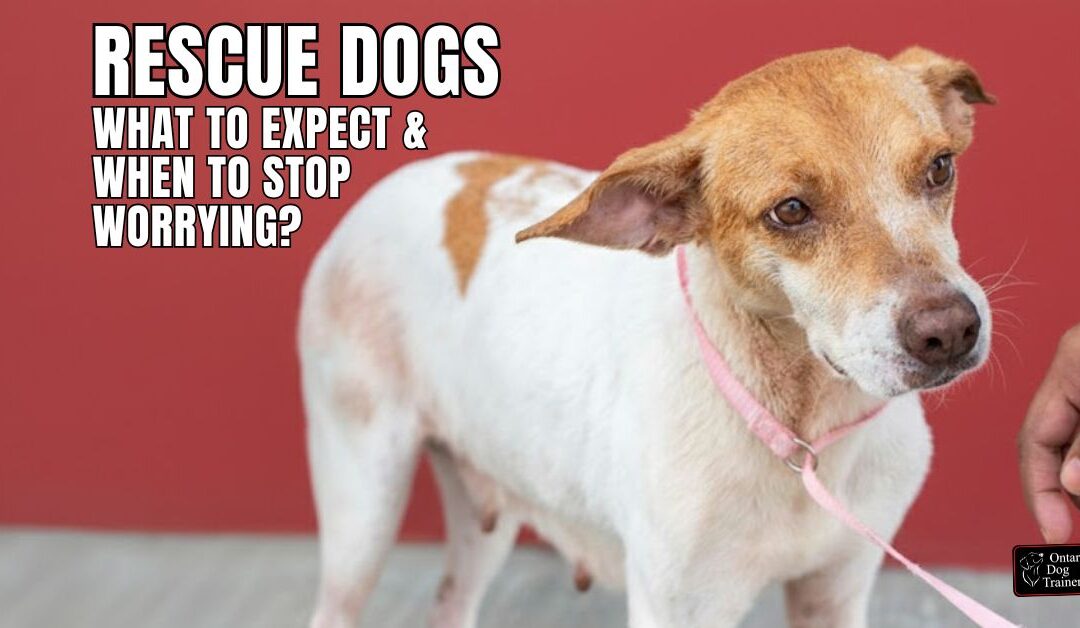The Realistic Timeline Every Owner Needs
Question for you: What if your new rescue dog isn’t being stubborn — they’re just still deciding if they’re safe?
Every year, thousands of people bring home rescue dogs filled with hope, love, and a vision of instant connection. But within days, that dream can collide with reality. The dog hides under the table, ignores you, or growls when touched. You start to wonder — how long does a rescue dog take to settle in?
Here’s the truth: every dog has their own internal clock. Some settle in fast, others need weeks or even months. There’s no one-size-fits-all rule, but there is a pattern. Understanding this adjustment timeline helps you stay calm, patient, and consistent — and that’s what builds trust.
What We’ll Cover
- The realistic rescue dog settling-in timeline
- Why each phase matters and what to expect
- Common mistakes that delay progress
- What to do (and not do) when your dog “isn’t bonding”
- How to spot small signs of real progress
Too Much, Too Soon — Why Rushing Can Break the Bond
One of the biggest mistakes new adopters make is expecting a newly adopted dog to act like a loyal, trained companion within the first 24 hours of starting their new life. Here’s the truth:
🐾 Your dog is not settled.
🐾 Your dog is not grateful.
🐾 Your dog is not ready for class, playdates, or parties.
What many people see as “bad behavior” is often just normal adjustment stress. Sadly, this mismatch in expectations leads to one of the most tragic outcomes:.
Let’s be clear — regardless of the background your newly adopted dog has come from, neglect, multiple homes, or months of kennel stress, expecting them to “just fit in” right away is unrealistic and unfair.
Instead of rushing…
- Create a calm space.
- Stick to a simple daily routine.
- Avoid overwhelming the dog with activity, affection, or new people.
- Skip obedience classes until the dog knows you are safe and predictable.
The goal is not to “train” on day one. It’s to build trust.
The Rescue Dog Adjustment Timeline: What to Expect
Dogs don’t follow calendars — they follow comfort and consistency. The timeline below helps you understand what’s happening under the surface.
| Time Period | What You Feel | What Your Dog Is Doing |
| Day 1 | Excited, nervous, expecting quick connection | In shock. Observing. Unsure who to trust. |
| Days 2–3 | Concerned that your dog is withdrawn | Decompressing quietly. Still taking it all in. |
| Days 4–7 | Frustrated by barking, accidents, or ignoring cues | Testing boundaries. Showing their real personality. |
| Weeks 2–4 | Feeling like “nothing’s improving” | Learning the routine. Starting to feel secure. |
| Months 1–3 | Hopeful, connected, beginning to relax | Trusting you. Ready to bond and learn. |
Your first two to four weeks with your adopted dog is the honeymoon period, followed by the reality period, which may extend well beyond three months. If you push too hard during the honeymoon, the reality can get messy. If you go slow and steady, the real relationship begins to blossom in months 1–3 and will continue to grow strong as your life together moves forward.
Successful Settling Timeline

When Your Dog Isn’t Following Your Timeline: What to Do (and What Not to Panic About)
Let’s get something straight: this timeline is a guideline, not a guarantee. Regardless of what timeline you establish, it’s still your timeline, created by you, not by your dog. Dogs don’t follow calendars. They follow comfort, consistency, and energy, which is what predictable leadership is about.
So what happens when your newly adopted dog isn’t bonding after week one? Or they’re still barking and hiding after three weeks? Or they’re totally ignoring your routine even after a month?
Here’s what to remember — and what to do about it.
🧠 1. Understand: The Timeline Is Based on Predictable, Low-Stress Environments
If your dog has had multiple homes, trauma, or minimal socialization, they may take longer to settle. Add in kids, other pets, or inconsistent rules, and their internal clock slows down even more.
💡What to do:
-
- Remove as many stressors as possible.
- Go back to basics and minimize chaos: calm walks with minimal distractions, undisturbed crate time, predictable feeding, and low touch and talk.
- Stay consistent. Even if it feels like nothing is “clicking” yet, it will.
- Remove as many stressors as possible.
🧘 2. Regulate Yourself Before You React to the Dog
Human expectations create most of the pressure on the dog. You want your new dog to be grateful. You need the training to work. You hope they’ll love you by next Tuesday. That pressure spills into how you interact — and your dog feels it.
💡What to do:
-
- Take the pressure off your dog by lowering your expectations.
- Remind yourself: There is no timeline for success. You’re not behind. You’re building trust.
- Drop the “progress” scorecard.
- Get curious: What is your dog trying to tell you? Spend time just watching and following your dog; sniff what they sniff; be curious about what makes them curious.
- Take the pressure off your dog by lowering your expectations.
🏠 3. Build Safety First, Not Obedience
A dog who’s shut down, fearful, or avoidant is not ready for commands. They don’t trust you yet. And trust isn’t earned through “sit” or “heel.” It’s earned through predictability.
💡What to do:
-
- Keep a routine: same time, same tone, same walk route.
- Use food from your hand, not a bowl.
- Speak less, observe more.
- Reward curiosity, not commands.
- Keep a routine: same time, same tone, same walk route.
🐾 4. Watch the Micro Wins — Not the Big Ones
Many owners miss progress because they’re looking for the wrong things. Your dog doesn’t need to be cuddly, social, or “perfect.” They need to feel secure.
💡Progress looks like:
-
- Choosing to lie near you (even if not touching)
- Taking food from your hand
- Softening body posture when you enter a room
- Wagging their tail in the morning
- Following you from one room to another
- Choosing to lie near you (even if not touching)
If you’re seeing those, you’re doing just fine.
📉 5. Don’t Spiral into “Failure” Thinking
If your dog growls, guards food, pees indoors, or shows fear-reactive behavior, don’t panic. These are signals, not signs of failure. They don’t mean you’re a bad owner. They mean your dog is communicating what they’re struggling with.
💡What to do:
- Pause. Reassess. Reset. Seek help if needed.
- Avoid correcting behavior you don’t understand.
- Focus on the environment, not the symptom. What is it that may be triggering your dog’s behaviour?
- Reinforce what you do want instead of punishing what you don’t.
Every Dog Has Their Own Clock
Some dogs settle in 3 days. Others take 3 months. And many take even longer to accept that your home is their home. The worst thing we can do is label a dog “broken” because they aren’t performing fast enough to meet our human hopes and expectations.
You adopted a dog. Not a Disney movie or a robot.
Progress will come. But only if you’re willing to wait, observe, adjust, and lead.
🟡 When in doubt, simplify. Less is more.
🟡 When overwhelmed, slow down. You may have to go slow to go fast.
🟡 When frustrated, return to the walk. Leadership begins, and bonds are built by walking together.
Your calm presence is the foundation for every bit of trust that follows.
Need Professional Help?
If your rescue dog is still struggling to settle, shows ongoing fear, reactivity, or unpredictable behavior, that’s the time to bring in experienced guidance — and that’s exactly what I’m here for.
I specialize in helping rescue dogs learn to feel safe again through calm leadership, clear structure, and communication that builds trust rather than control. Quick-fix or dominance methods only add pressure; what your dog needs is consistency, clarity, and understanding.
If you’re feeling unsure, overwhelmed, or simply want a professional eye on your dog’s progress, reach out. Together, we’ll create a step-by-step plan that helps both you and your dog move forward with confidence.
👉 Book a private session or a free virtual consultation today and let’s help your dog finally feel at home.

